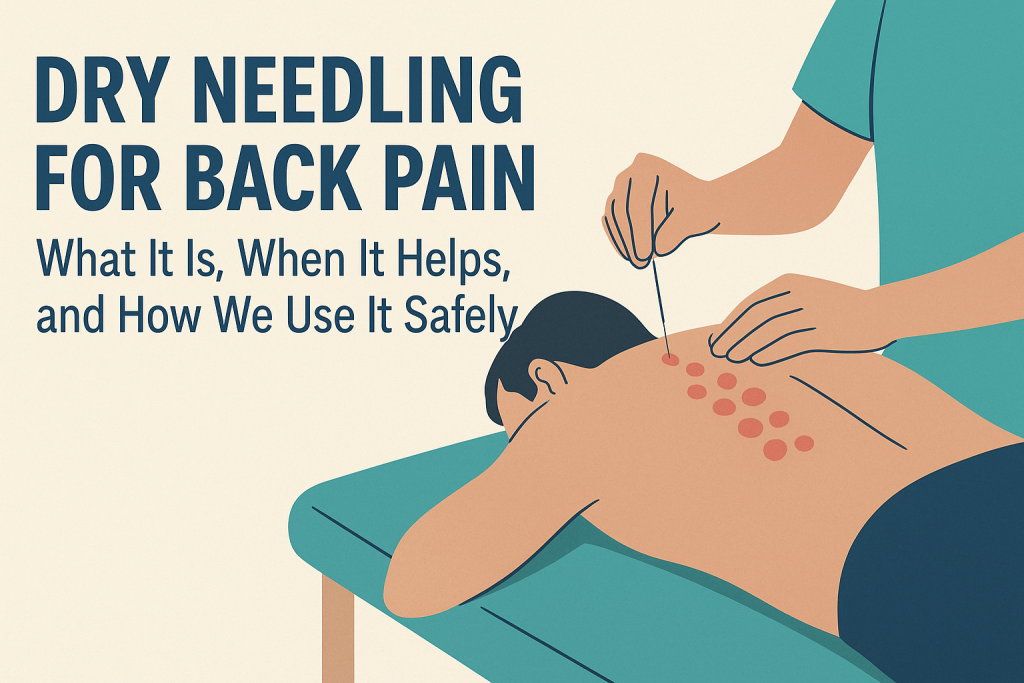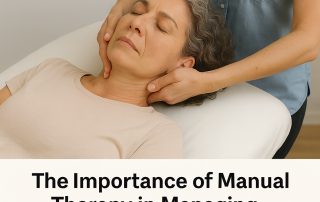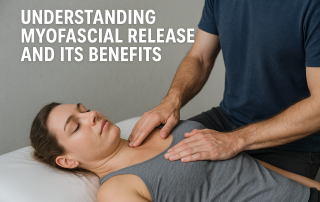Quick take: Dry needling can provide short-term pain relief and improved movement for many back-pain cases when it’s part of a broader plan that includes manual therapy and exercise. In Colorado, qualified physical therapists are permitted to perform dry needling; it is not considered acupuncture under state law. (iasp-pain.org)
What is dry needling?
Dry needling uses a thin, solid filiform needle to stimulate myofascial trigger points and sensitive tissue to reduce pain and restore motion. It’s based on modern neuromusculoskeletal principles and is distinct from acupuncture’s traditional framework. (apta.org)
How it may help back pain
Benefits of Dry Needling for Back Pain
Research suggests dry needling can reduce pain and disability in the short term, especially for myofascial contributors to low back pain. Results are best when combined with active rehab (graded exercise, movement re-education) rather than used alone.
What to expect at Manual Therapy Associates
A typical session may include:
- Brief assessment to identify involved tissues and movement limits
- Targeted dry needling (you may feel a quick twitch or dull ache)
- Hands-on care (myofascial release, joint and nerve mobilization) and custom exercises to lock in gains
- Clear home plan and ergonomic tips
Learn more about our services: Dry Needling and Back & Neck Pain.
Safety, side effects, and who should avoid it
Common, short-lived effects include soreness or light bruising; serious events are rare with trained clinicians and proper hygiene. We screen for bleeding risk, anticoagulants, local infection, pregnancy considerations, metal allergies, and needle phobia before proceeding. Our clinicians follow competency and safety standards set for PTs who perform dry needling. (fsbpt.org)
Dry needling vs. acupuncture (and Colorado rules)
Under Colorado statute, dry needling performed by a qualified PT is within PT scope and is not the practice of acupuncture. Dry needling targets restrictions in muscle or fascia and along nerves rather than acupuncture points and meridians. We meet state training requirements and informed-consent standards. (Colorado.Public.Law)

How many sessions will I need?
Many people notice change in 1–3 visits when dry needling is paired with movement and self-care; persistent or complex cases may need a longer plan. We decide together based on progress and goals, and we pivot if you’re not improving as expected (no “one-size-fits-all”). (General expectations are consistent with typical clinic experience and service guidance.)
When to seek urgent medical care instead
Call your clinician or urgent care now for red flags: new bowel/bladder changes, saddle anesthesia, rapidly worsening weakness/numbness, fever with severe back pain, or major trauma. These require medical evaluation before any needling or exercise plan.
Book care in Arvada, CO
Manual Therapy Associates — 12001 W. 63rd Place, Suite 202, Arvada, CO 80004. Call: 303-668-2898. One-to-one, hands-on physical therapy. Schedule now.
FAQs (people-first, concise)
Does dry needling hurt?
You may feel a brief twitch or dull ache; post-session soreness is common for 24–48 hours. We use gentle dosing and follow with movement strategies.
Is it safe?
With trained PTs and clean technique, serious complications are rare; we screen carefully and obtain informed consent.
Is it the same as acupuncture?
No. Dry needling follows a modern neuromusculoskeletal model. In Colorado, PT-performed dry needling is legally and clinically distinct from acupuncture.





